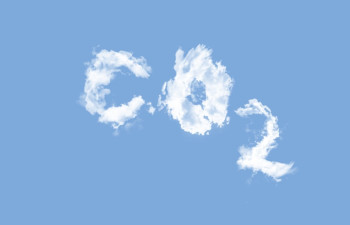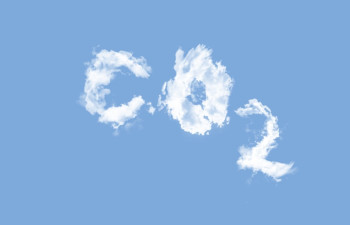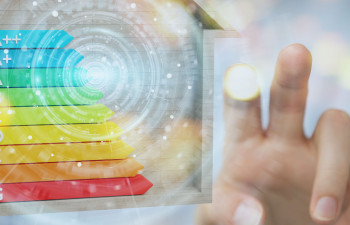Decarbonisation is all about reducing the amount of carbon dioxide (CO2), and other greenhouse gas (GHG) emissions, such as methane (Ch4), nitrous oxide (N2O) and fluorinated gases (F gases) that are produced and released into the atmosphere. It may therefore come as no surprise that manufacturers play a huge role when it comes to decarbonisation and net zero. Not only is the onus on manufacturers to develop and produce energy efficient and low carbon products, but their own manufacturing processes and buildings need to decarbonise also.
Why do manufacturers need to decarbonise?
1) Climate change
Since the industrial revolution, man-made greenhouse gas emissions have grown hand-in-hand with the Earth’s temperature. The Earth is approximately 1.1oC warmer than from 1850-1900. While this may seem insignificant, countries across the globe are feeling the dire consequences of climate change, with affects including water scarcity, rising sea levels, ocean acidification, loss of land mass, loss of biodiversity, extinction of different species on land and sea, droughts, wildfires, flooding, water pollution, damage to infrastructures, homes and buildings, failure of harvests, impacts on food production, famine, excess deaths, ill health and an increases in disease, plus negative impacts on local economies and poverty.
2) Legislation
A growing coalition of over 70 countries are on a pathway to net zero by 2050. To do this, governments need to implement legislation to decarbonise all areas of the economy. Those manufacturing in countries that have not pledged to net zero or decarbonisation, will still be affected if they sell products in countries that have. In many regions, decarbonisation legislation will be driven by the mandatory introduction of Minimum Energy Performance Standards (MEPS). While new green legislation will be put into practice gradually, it’s no time to sit back and wait, as all aspects of products, manufacturing and buildings need to decarbonise.
3) Energy costs and security
Saving energy and producing sustainable power is central to decarbonisation. The less energy a manufacturer uses from the grid, the less it costs and the less carbon is produced. The recent steep rises in fuel prices, coupled with uncertainty on energy security, have left energy users vulnerable. Any steps that can reduce these risks make sound business sense.
4) Customer demand
Specifiers, designers, installers and their clients are realising the advantages of decarbonisation and keen to embrace energy efficient heating, ventilating, air conditioning and refrigeration (HVAC&R) technology. HVAC&R systems are a large investment, with long lifetimes, so there’s a desire to future proof in the face of changing legislation and uncertain energy costs. Not only that, but considerations around ESG (environmental, social, and governance risk and opportunity) is also becoming increasingly important to companies, especially when it comes to attracting investment.
What do manufacturers decarbonise?
HVAC and refrigeration manufacturers are faced with a triple whammy of decarbonisation, by improving the energy efficiency, global warming potential, and carbon emissions of:
- Products
- The manufacturing process
- Buildings (manufacturing sites, show rooms, offices etc).
At Eurovent Certita Certification (ECC), we think the wise move is to take a ‘cradle to grave’ approach, covering the whole product, building or process lifecycle.
How do manufacturers decarbonise?
The savvy manufacturer will already be taking steps to decarbonise as many areas as possible, or at least have it high on their priority list. Decarbonisation is going to be a long and sustained process which will encompass a number of different areas including:
1) Data collection
To start, manufacturers need to undertake an audit of their current carbon emissions and energy consumption. Using this data as a baseline, organisations can find areas to improve, and work out budgets, strategies, resources and timescales. Data also allows the effective monitoring of progress and targets.
2) Energy efficiency
Energy efficiency sits at the top of the decarbonising agenda as it transcends across products, processes and buildings. The big efficiency gains will usually come in installing or upgrading old, inefficient equipment including:
- Production line equipment
- HVAC and refrigeration equipment
- And upgrades to the building envelope including doors, windows, insulation, roofs and walls.
In terms of products, improving energy efficiency holds several benefits including:
- Future proofing products against new MEPs
- Opening up new markets when it comes to decarbonisation
- Lower running costs for end users.
Manufacturers who can prove product performance and compliance with MEPs, will stand head and shoulders above the competition. This is where having third party certification, such as the internationally recognised Eurovent Certified Performance (ECP) mark, can pay dividends.
3) Renewables
Some manufactures will be reducing reliance on the grid via renewables. Onsite renewable energy production by solar, wind or combined heat and power (CHP), offers opportunities for zero carbon energy. Additionally, manufacturers who can produce even part of their own energy requirements, are insulated far better from high price hikes or the threat of energy shortages than those who do not.
4) Sourcing sustainable materials
Embedded carbon emissions have to fall significantly, so cost alone can no longer define value when it comes to our new decarbonised world. Sustainable materials, such as green steel (made without using coal by renewable electricity and hydrogen) are in growing demand, as all aspects of a product’s carbon footprint comes under scrutiny.
5) Digitalisation
Using new digital technologies to optimise, streamline, reduce travel and automate aspects of the business is another core part of decarbonisation. For HVAC&R manufacturers digitalisation works in a number of ways:
- Smart technology can help operate building management systems to reduce waste and improve efficiencies
- Digitalising production lines can lead to better automation, less waste and faster manufacturing speeds
- Digitalising products allows for the better sharing of information and product attributes in Building Information Modelling (BIM) workflows and design
- Meetings, staff training and R&D activities can be accomplished online or with tools such as VR, cutting down on carbon emissions from travel
- Going digital also helps to capture important data, to make informed decisions and track your decarbonisation journey.
6) Logistics
We are yet to know how different countries will treat logistics when it comes to distribution and retail, but we do know that how you move products and materials affects carbon footprint. Products or materials using higher carbon transport modes may be penalised, making those transported more sustainably, or locally produced products, more attractive to buyers.
7) Carbon offsetting
Manufacturers can also choose to offset emissions that may be challenging to cut at this particular time. Carbon offsetting cancels out the impact of some CO2 emissions, but it should only be used as a stop gap and cannot fully replace decarbonising a process.
The importance of proving energy efficiency
Certification is key to decarbonisation as it enables professionals, buyers and end users to make informed decisions about energy efficient, sustainable and low GWP products. Not only does certification provide specifiers, designers and buyers with access to accurate performance data, but it also allows for fair and impartial comparison of products - something that becomes increasingly important when every choice either adds or detracts from carbon footprint.
Put simply, products that can prove their reliability, energy efficiency and low global warming potential will be in high demand on the path to net zero as they are key to decarbonisation. Products that have been independently verified and hold certification such as the internationally recognised Eurovent Certified Performance (ECP) mark, will stand out from the competition. This is because certification builds trust and customer confidence that products will meet MEPs, perform as expected and offer reliable energy savings.
Want to know more? Find out about our certification programmes, and our certification marks or if you are a manufacturer, you can take your first step to certification via our online application page.





